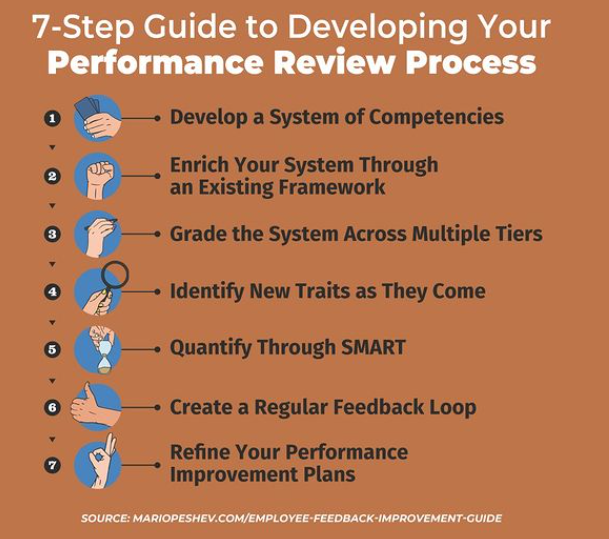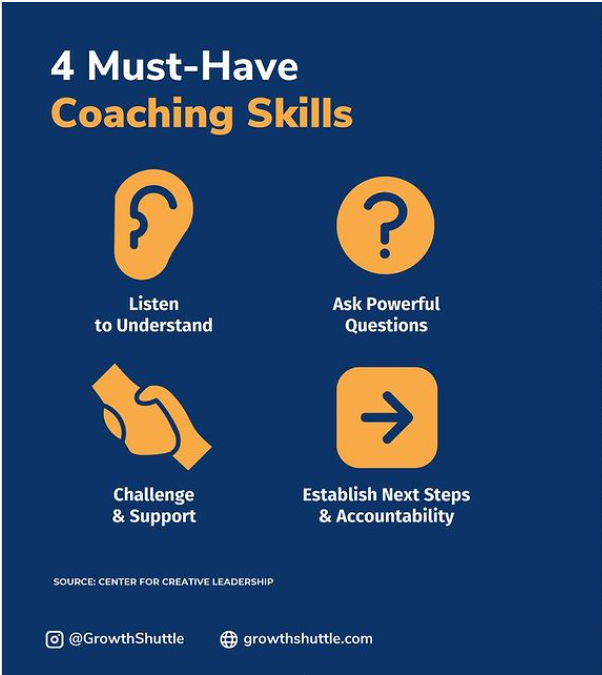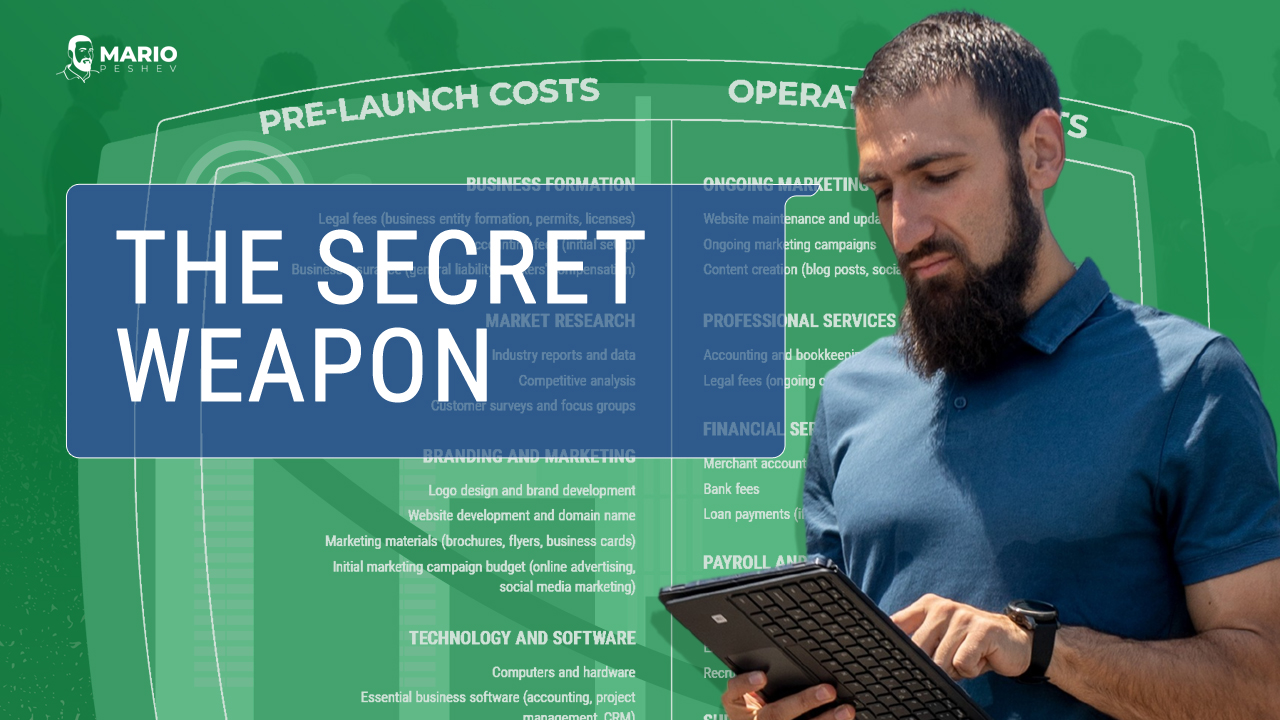When it comes to finances, increasing profitability broadly falls into one of two categories: growing your revenue or decreasing your spending.
Traditional 9-to-5 employees relying on a single source of income focus on the latter. After all, if your monthly or annual income is fixed, the best you can do is optimize your expenditure and try to improve your standard of living (bonus points for managing a savings account for rainy days or college funds).
Successful entrepreneurs and business owners, on the other hand, double down on growing revenue. While some are frugal and save a fortune, others still maintain a more lavish style within their broader budget cap.
No matter if you rely on payroll or if your business relies on a single source of income, every risk management professional will immediately recommend diversifying your income!
After two years of COVID back and forth, followed by hyperinflation and mass layoffs, the rules of predictable income or job safety have failed hundreds of millions of individuals across the world.
If you want to mitigate risk both short-term and long-term, here’s a list of additional activities you can explore and invest in which would allow you to slowly build wealth across multiple fronts and weather any storm by tapping into different income sources.

Note: Some affiliate links included exclusively to services I use and am investing in myself. Some include discounts or additional support upon registration.
1. The Stock Market
One of the prevailing and most popular ways to provide new income opportunities is investing.
Unlike service jobs (where you can virtually make money out of thin air and charge by the hour), the stock market requires an initial – or ongoing investment – and bearing the fruits forward.
There are different ways to invest – most commonly into individual stocks, index funds, or ETFs (exchange-traded funds managing your portfolio efficiently).
Revenue is primarily derived in two ways: stock value (hopefully growing in price over time) and dividends. Some companies don’t pay out dividends but many do, providing ongoing opportunities for you.
One of the lead indices S&P 500 has been yielding an average 11.88% annualized return since its inception in 1957. While 2022-2023 has been turbulent for the market – and past performance is no guarantee of future success – there are hundreds of thousands of successful individual investors diversifying their income and growing through the market.
With fractional shares and tens of open brokerages and apps nowadays, you can start with just several dollars and take it from there. A great rule of thumb is investing monthly – on a regular basis – as income accumulates over time.
There are hundreds of brokers out there, but my preferred international one is Interactive Brokers. I use two local (national) ones plus Revolut, but my largest investment is via Interactive due to the broad number of ETFs and indexes plus reinvesting profits back (or accumulated interest rates).
2. Real Estate Investment Trust (REITs)
REITs are a special investment class that you can access via any of the stock brokerages.
REIT stands for Real Estate Investment Trusts – large portfolio companies owning income-generating real estate. This could be commercial buildings, land, warehouses, or any rental properties that generate predictable revenue.
While I won’t dive too deep into each class, REITs are explicitly mentioned for two reasons:
- You own a fraction of a real estate portfolio starting at several dollars – unthinkable given the current price of actual real estate
- No maintenance, landlord, construction work, taxing, or any other work needed
- Often known for great dividend distribution – i.e. a source of recurring income without lifting a finger
3. Starting a Blog
While the glory of blogging days is behind us, blogging is still a viable way to:
- Consistently generate content
- Rank higher online over time
- Generate some organic value
- Consistently test all sorts of offers – freelance, consulting, and affiliate marketing, selling courses (and others we’ll cover below)
- Improve your personal brand
- Connect with other content creators/individuals and grow your network
Your blog starts as a portfolio first, but over time it transitions to an actual asset when nurtured properly.
A well-established blog also positions you as an authority in your field. This brand recognition can open doors to exciting collaborations and projects you might not have considered before. Here’s how:
- Industry Recognition: As your blog readership grows and engagement soars, you’ll gain recognition from others in your field.
- Increased Expertise: The process of consistently creating high-quality content makes you a deep well of knowledge in your niche. This expertise positions you as a valuable resource for others, potentially leading to consulting opportunities or partnerships where your knowledge can be directly applied.
- Unexpected Opportunities: A strong brand built through blogging can open doors to unforeseen opportunities. You might be approached by companies seeking brand ambassadors, or land freelance writing gigs for publications you admire. The possibilities become wider as your reach and reputation expand.
Growing blogs often get additional funding opportunities such as sponsored posts or paid link offers, in addition to different paid consulting/speaking/writing gigs so it is definitely a good way to diversify your income.
4. Consulting
If you are well-versed in your field – or have acquired competitive skills in a growing ecosystem (from NFTs through AI to media buying for new networks), consulting opportunities are always in demand.
Companies want to bring in expertise and hiring is not always an option – either because it’s not a full-time job or top experts work as solopreneurs and agencies.
Packaging your key proposition, pitching to agencies, promoting on your site/social media, applying as a speaker or a podcast guest, and attending events can all lead to paid consulting opportunities in addition to your main job.
Whether starting out or you are well-established in business consulting, my FREE 8-part Business Advisory email series can be a valuable resource. It’s designed to help you navigate the journey of landing your initial three clients, complementing your growing suite of consulting skills.
5. Coaching
Coaching is a separate class from consulting for different reasons (I’ve described some of the main differences in the other post).
More importantly, coaching can be nurtured and positioned adjacent to your “hard” skill – one of the reasons life coaches or business coaches exist, independently from the core skill of yours.
If you are passionate about people, psychology, processes, energy, or other spiritual and mental factors for improving productivity by unlocking human potential, this may be a great calling for you and pretty compatible with full-time employment.
6. Guest Blogging
If you enjoy writing, guest blogging and paid writing opportunities are among the easiest skills to sell online.
Even with ChatGPT, Jasper, and other AI content-creation tools, great writers are always in demand. Especially if you provide additional expertise in a field (your day job) that’s indispensable and presents additional insights to readers.
Writing work could be sold directly to websites looking for writers, content agencies, and freelance networks like Upwork. Developing your personal brand through social and blogging can facilitate this as well.
You can still use AI to help strategize, gather insights or statistics, and shape additional ideas (considering you apply thoughtful editing after).
7. Angel Investing
Angel investing is still a form of investing, but follow my lead here.
Standard angel investments span from $25K to $250K (or to $1M in some extreme cases). Most angel networks and syndicate support lower tickets – from $5K to $10K. Additionally, crowdfunding platforms let you own a tiny chunk of an emerging startup for as low as $100.
As a SeedBlink ambassador, I help new angel investors explore available investments in Central and Eastern Europe.
Signing up for the platform will present growth opportunities with tickets starting from 2,000 EUR (about $2,200) for businesses that went through extensive due diligence and have an established VC fund leading the round. If you find SeedBlink’s current open rounds interesting, feel free to contact me personally and I’ll shed some light on the details.
Back to the theory behind angel investing. The traditional – I say traditional – way to generate revenue here is by waiting this out and hope for an exit in 4 to 7 years that yields a multiplier of the revenue. And hopefully, it comes.
BUT – additional opportunities in participating in angel investing include:
- Connecting with other angel investors working with and funding other companies
- Strategic partnerships and collaborations with other investors
- Events, parties, cocktails with high net worth individuals and funds
- Improved brand perception and credibility as an angel investor
- Commanding better rates due to the better network and connections
- Tapping into direct opportunities in your new network
- Paid advisory and consulting for portfolio companies
- Fractional job options
The bottom line, the hidden perks of investing in businesses are less quantifiable, yet worthy of considering.
8. Freelancing
Any form of trading time for money can be applied here.
Some of the most popular freelancing options out there are:
- Graphic/Web design
- Copywriting/Editing
- Development
- Translation services
- Social media marketing
- Virtual assistance
- Photography
- Training (teaching skills)
- Accounting/admin services
- Digital marketing
How you sell your freelancing services is the trickiest part – most do face-to-face, via referrals, on-site meetings, their own network. Sites like Upwork, PeoplePerHour, or Freelancer meet clients with freelancers in the form of a marketplace.
9. Side Job
Unless your current employer explicitly disallows that, there are part-time or hourly jobs available to supplement one’s income.
From Uber and delivery services through playing with a band or DJ’ing in night clubs to any mix of consulting/freelancing/fractional management/operations job, considering actual employment in exchange for payroll or fixed monthly pay is worth checking.
Just as university students often have to juggle studies with waiting tables or delivering pizzas, and young parents balance work and raising a baby, both evening and weekend jobs exist to supplement income or develop a new trait better.
I know data analysts who work as writers or in libraries on weekends, artists who work as nannies, accountants who teach English, and students who broker real estate, renovate gyms, and engage in all sorts of extracurricular activities.
10. Starting a YouTube Channel
YouTube is the largest video search engine on the planet.
While social media is adapting Instagram Reels or TikToks, monetization on YouTube is hard to beat.
The threshold for monetizing a channel is 1,000 subscribers and 4,000 hours of total watch time. Once you cross that, you can enable monetization for any videos uploaded on the platform, depending on views.
According to different surveys, 1,000 ad views average $18 for a YouTuber. That said, longer videos can embed multiple ad slots, regular subscribers can watch multiple new videos per month, and some niches yield better ROI in terms of CPM (if they target more expensive viewers).
Additionally, YouTube features different programs like Shorts making up for added revenue opportunities.
And let’s not forget brand deals (being a core revenue channel for top creators.)
11. Starting a Podcast
Podcasts are somewhat similar to YouTube, but hosting a new podcast doesn’t come with the same marketplace dynamic.
While podcast promotion platforms exist, and you can feature your podcast on Shopify, iTunes, or any other popular network, gathering regular subscribers takes time.
But compared to YouTube, audio-only production is much easier than professional video. Plus, you can repurpose a YouTube show into a podcast (at least in some cases).
Podcasts can monetize on CPMs similarly to YouTube, but sponsored ad placements are pretty common. Signing a deal for a fixed amount per show/monthly (based on listeners) can make for consistent income.
12. Real Estate
This is the most expensive widespread asset class to get into for diversification purposes – but a list would be incomplete without real estate.
While REITs are the starter guide to real estate, it’s a viable source of passive income for many.
Several disclaimers worth noting:
- Some countries and cities present better terms for renting than others. The US has a well-evolved model for debt leverage, high enough rent opportunities, tax deductions for duplex houses (renting half), and more.
- Home ownership can start at a fraction of the home value with down payment as low as 10% in some cases (considering favorable bank terms).
- If you lack experience, initial costs may quickly skyrocket – agent fees, renovation, additional construction/plumbing/carpentry work to get in, notary taxes, etc.
- There are specific deals in certain areas that make sense. Bonus points if you’re a handyman or can offload at low cost – and potentially flip houses instead.
- While renting is tempting, changing tenants may require expensive remodeling.
- If the math is right, rent can cover the mortgage and then some, plus selling in a few years is still a net positive exercise.
Again, while it’s a non-obvious easy way to diversify income, it’s a known fact that real estate appreciates in value, and renting bears fruits. Finding ways to fund the down payment—or looking for great deals for abandoned houses or warehouses in a newly established business area—can be both affordable and really rewarding for those who wish to diversify their income.
13. Selling Designed Merch
Tees, mugs, socks, notebooks – tons of accessories, items, and wearables to brand over.
While setting up a shop may be expensive (and ROI questionable), the beauty of print as side income is broad opportunities, low (if any) starter cost, and easier to run with just a few sales a month as a side gig.
Also, this could be supplemented with:
- Helping friends sell merch for their bands/art studios/any brand really
- Creating your own unique twist/designs
- Selling to businesses as a resell exercise (concept + bulk order with an upsell for the service)
- Pairing up with stock photos and other lines of revenue
Really easy to start a Shopify or WooCommerce store and sell online as well.
14. Stock Photos
If you’re into photography – or AI generative images – stock photos are another source of revenue for you.
Some popular sites to sign up and let the marketplace promote your photos are:
- Shutterstock
- 500px
- iStock Photo
- Etsy
- Getty Images
- Adobe Stock
- Envato Elements
Even though competition is high and ranking doesn’t happen overnight, targeting specific niches of missing products or trendy topics can be beneficial.
15. Creating Courses
Tutoring and course creation online is broad and can encompass virtually any type of job.
From piano playing and singing through productivity, energy management/stress management, any sport courses to origami, solving puzzles, or modern skills and sought-after professions nowadays.
Courses can also be packaged in a myriad of ways:
- Video recordings
- Text courses
- Quizzes
- 1:1 training sessions
- Combination of resources + group sessions
Students seek and perceive different things, and that’s why different mediums exist.
Working with a professional trainer could be a great opportunity to prepare training materials for someone in charge of closing speaking and training deals on-site.
16. Public Speaking
Public speaking is an extension of course creation – which could be course-led or not.
Keynote speakers charge a hefty fee for an hour on stage, though there are fewer opportunities on the market, credibility building takes time, and international or cross-state travel is often involved.
Nevertheless, paid speaking opportunities may include corporate courses, pairing with private academies/colleges, seminars, self-organized group sessions and more while you build that portfolio.
And the added ROI of speaking is high – positioning, brand awareness, and accumulated boost of new opportunities coming your way.
17. Influencer Marketing
The boom of digital content, online sales, and brand management led to a spike in demand for influencer marketing.
When traditional offline marketing is less appealing for smaller brands selling internationally, digital options are limited as well.
Between SEO, paid ads, giveaways, organizing webinars, and all forms of partnerships and collabs, a business can only go so far.
Influencer marketing is an effective way to amplify attention and create a broader funnel by tapping into specific segments via individuals with some following online.
And while celebrity influencers are the first to come to mind, they aren’t the main focus here: their audience is less committed or attached, and sponsored deals are far too common to justify the exorbitant costs for that following crowds.
Nano and micro-influencers gather several thousands or tens of thousands of followers, but nurture closer communities with personal touch. Imagine school promoters – attachment to other fellow students is closer, the sale is easier, communication is more natural, and that’s why results are usually better.
Tons of influencer marketing platforms offer pay-per-post or another form of commission-fee deal to monetize similar audiences. Direct brand deals are also possible.
18. Ambassador Deals
Some call it “ambassador”, others “brand advocate”, “evangelist”, “community manager” or anything else in relationships and promotions.
Brands and businesses need adoption and insights when penetrating new communities (or launching products).
Nowadays, influencer marketing is the closest popular trend to that – but it usually touches on broader, social impact (social media/video/blogging). Ambassador opportunities are more personalized – making personalized intros, attending events on behalf of the business, organizing meetups and community events, and more.
This level of commitment is worth paying for in different forms – hourly, flat monthly fee, or quarterly budget for organizing certain events plus commission.
In many cases, it’s a form of a part-time job with some incentive for bringing more attractive deals through personal networking and representing the business in a given ecosystem.
For instance, if you’re in tech, you can become an ambassador for a development environment, AI tool, a startup for creating slide decks, video editing software – or even offline businesses like healthy food or a new form of yoga. Promoting a business that’s adjacent to yours will benefit both parties equally.
19. Crypto
Similarly to the stock market, REITs, or other investments like currency trading or hoarding gold, cryptocurrencies are a popular way to hedge revenue if you know what to do.
I won’t delve into that asset class due to controversies around the SEC definition of securities, the collapse of exchanges like FTX, unclear regulations internationally, and severe volatility of many currencies.
But legal and tax alone, trading with cryptocurrencies can be a side job yielding additional income – and a more dynamic and faster moving one compared to the stock market. Plus, crypto exchanges work 24/7 unlike markets.
20. Writing a Book
While it may not seem immediately connected to the previous points, writing a book offers its own unique advantages.
First and foremost, the book allows you to establish yourself as an expert in your field. By sharing your knowledge, experiences, and insights in a comprehensive and well-written book, you position yourself as a credible authority, which can open doors to various income-generating opportunities.
One of the primary benefits of writing a book is the potential for passive income. Once your book is published, it can generate ongoing revenue through sales, whether in physical or digital format.
Additionally, you can leverage your book to create related products or services, such as online courses or consulting services, further expanding your income streams.
A book serves as a powerful marketing tool, attracting new clients, speaking engagements, and media opportunities, all of which can contribute to your overall income diversification.
21. Dropshipping
Dropshipping has introduced millions of people to entrepreneurship – and eCommerce itself.
Reselling products internationally is a form of arbitrage that doesn’t require inventory, fulfilment can be fully outsourced as well, and you can benefit from the commission exchange.
The simplest form of dropshipping is marketplace reselling. Acquire items off of eBay auctions or garage sales and resell them!
This is a great way to make some extra $100 to $1,500 – $2,000 a month with multiple transactions over several weeks.
And dropshipping in its pure form requires the following steps:
- Identifying a niche (a category of products to tailor best to your audience)
- Finding suppliers (vendors you’ll resell)
- Setting up a store – a Shopify store or a hosted WordPress with WooCommerce
- Picking and adding products (plus the corresponding pricing, value proposition)
- Marketing – bringing traffic to your site
- Order and customer management – post-transactional tracking and customer support
22. Flipping Websites
Just like dropshipping arbitrage or real estate flipping, site flipping is a thing, too.
I wrote a detailed guide on acquiring digital properties which entails different ways to assess a site online and gauging its value.
One of the easier ways to look into that is flipping websites: buying a website for X and selling for a multiplier if you have the right buyer.
Networks like Flippa or Microns often list starter sites for as low as a few hundred dollars, and these could be:
- Sold higher directly to buyers
- Nurtured a bit further before a sale (for example, blogs populated with lots of low-cost content pre-sale)
- Bundled in addition to services you offer
Consider flipping sites as a viable alternative for generating revenue with digital properties.
23. Build and Sell Apps
Building sites and web applications is no longer a software/web engineering territory!
While my background (and education) is in informatics and computer science, it’s a fact that different platforms and tools exist to serve different needs – especially smaller or lower cost products in its early days.
- WordPress could be used for virtually anything – and you can start a small website with no code and scale to tens of millions of views with the right plan and infrastructure (for context, at DevriX we’ve scaled 12 sites past 100,000,000 monthly views each.)
- Site builders like Squarespace, Webflow, Weebly can be no-code starters for portfolio sites, classifieds sites, community networks
- Shopify stores can be launched with no code
- Bubble apps are beautiful and engaging – again no code
- Softr or FlutterFlow provide other key features
- Airtable is the go-to database for no programmers nowadays
Once you have an idea, you can build an app yourself and sell it in a few weeks or months.
I follow some indie members like @BuildSell30 launching similar competitions from start to exit in a month.
24. Selling Worksheets
If you can operationalize a working process or break it down into a framework, checklist, or workflow – you can end up selling that as a product, too.
These are particularly successful on Instagram and Twitter:
- Social media template frameworks
- Brand questionnaires for starting out
- SWOT analysis templates (I’ve got them, too)
- Buyer persona templates and questionnaires for new businesses
- Any work-related processes
- Checklists for site migrations/new launches
Tons of work can be simplified and organized – and these products can yield incredible results.
Over the years, I have developed a list of 7 steps to develop your performance review process

Notion is often used for similar templates and you can browse existing examples online.
25. Buying a Small Business
While established businesses cost tens of millions (or at least in the seven figures), employing a digital acquisition – or even a local service business – does not have to be as painful.
Different multipliers apply in business sales, but it’s not uncommon to expect 1.5 to 3X multipliers of the annual revenue of the business. If we settle at 2X average for an autopilot business, you can spend $10,000 for a business that’s supposed to generate $5,000 a year, or a little over $400 per month.
Now consider that a dividend investment over time, plus more time spent on the business will hopefully yield better returns that compound over time.
26. Starting a Community
Communities are great avenue for diversifying your income if you:
- Create a network of like-minded individuals
- Have something competitive to share
I launched my own business community after 15 years of high-ticket consulting services. I still work as an advisor or a fractional CXO, but the online community enables smaller business owners, side hustlers, solopreneurs to tap into my worksheets, ebooks, templates, and my answers for anywhere between $29/mo and $99/mo.
Other “freemium”-alike communities exist that profit in different ways: free access but selling courses, or affiliate marketing for other services, or paid sponsorships and upselling consulting.
In any case, gathering people together and providing value consistently is a scalable effort that doesn’t require a lot of initial investment.
27. Newsletters
Similarly to YouTube channels, Podcasts, and Communities listed in this guide, newsletters are another hot territory that’s brought back to life.
First off, owning customer data nowadays is:
- Hard – most people “rent” via social, ads, or more
- Expensive – traffic gets more expensive, so does paid data
- Limited – due to GDPR/CCPA and other regulations
If you have an audience on TikTok and it gets banned or sold, it may evaporate in a matter of days.
Email and text remain the two “owned” mediums that still work, and people rarely change (besides corporate email/phones).
And while spam emails and filters are a problem, email ROI is still believed to be between $36 and $40 per dollar spent on average – among the highest across all channels.
So – launching a newsletter and promoting however you can is a great way to grow your audience, operate with (almost) free campaigns, and be able to upsell services, cross-sell other products of yours, do affiliate, run sponsored ads, and so much more.
For reference, I’ve shared the newsletters I subscribe to.
28. Organizing Events
Event management is a full-time job that many enjoy—but it could be detached as either a rented service or a solo job. Great way to diversify your income!
Plus, you can set up digital events or organize events for corporations—both offline and online.
There are multiple ways a deal could be structured:
- Different fees for on-site vs. virtual
- Different virtual formats – from full-day or multiple days to a 1-3 hour webinar
- Seeling different services – audience gathering and lead generation, sponsorship catering, cross-selling other solutions
- Could be an agency model, a freelance one, per event or hourly
If you enjoy networking, have a community you work with, or can easily tap into a specific environment, this can be monetized.
And for event management tips, data, news, strategy, and inspiration, I can recommend you follow an old client and a great friend of mine, Julius Solaris.
29. Affiliate Marketing
Already mentioned multiple times in this guide, so it deserves its own section as well.
Affiliate marketing is one way to diversify your income as it is a form of referral promotion whereas a business features a product/service/brand and takes a commission out of every purchase.
It’s usually a pure performance marketing play – and that’s why it’s so widespread. Brands don’t risk anything and don’t pay upfront (unlike sponsorships, paid ads, or influencer campaigns).
So if you have an effective way to generate traffic – via SEO, already running ads, a large newsletter, or partnerships – you can tap into this channel as well.
Affiliate fees vary a lot, but they can span from 10% to 50% or higher off a product cost, or one-off sign up fees for SaaS plans, or recurring payments over time.
It’s a spectacular passive form of revenue if you start to grow your audience and slowly incur additional revenue with affiliate marketing.
Most suitable for blogs and newsletters due to the variety of ways to promote and tag links. It’s possible in social networks, although most networks limit the reach for external links. And social platforms like Instagram don’t even allow clickable links in captions (possible in stories, though).
30. AI Prompt Consulting
A trendy one with the inception of ChatGPT and Bard, consulting small businesses, agencies, and traditional companies on prompts they can use to optimize processes and work.
This could be structured as a packaged deal – a deck of hundreds of prompts, a consulting arrangement with strategy and identifying the right ones, or ongoing operational oversight on areas that a business can improve and new prompts that could automate work.
Additionally, this can be facilitated with virtual assistants you hire to manage some of the automated work. I’ve explained the process in this guide, but it’s a different form of business management and arbitrage outside of working solo to diversify your income.
Other Investments
Needless to say, I’ve done my best to identify and clearly segment over 30 different approaches to generate additional revenue and diversify your income.
The various categories covered in this guide span from services (freelance/consulting) and product development (courses) through commerce (dropshipping) to investing or flipping properties (real estate and digital).
There are still hundreds of different ways to diversify your income and make an extra living by investing in other asset classes, royalties, different types of services and jobs, equity shares in smaller startups, commission-based deals, and so on.
But my hope is that you’ll find something to diversify your income and supplement your day-to-day earnings, improve the quality of your life, spend your spare time in something productive (like new skills and developing your business acumen), and hopefully pass this forward to others for the greater good.








